Struggling with the proper lighting technique, especially with portraits? Here is some virtual help: a virtual online lighting studio, solely dedicated to simulating the lighting of a human headshot. Great care has been taken to have the virtual lights react in the most plausible and realistic way. If this is successful you should be able to transfer your experience from the Virtual Lighting Studio to the field directly. But first a wordy introduction.
By OLIVIER PRAT, ZVORK
In the middle of April, 2012, Zvork has put up on the Web a small free application called the Virtual Lighting Studio. It has gained some amount of popularity and I would like to share with you some insight on how it came to be and what its initial purpose is.
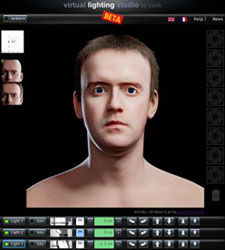
The arts of photography and painting have and extensive culture of lighting, the first being of course initially inspired by the second. More than a century after the introduction of photography, photographers have considerably expanded the boundaries of what can be done with lighting and invented new styles. In parallel, lighting techniques have also been developped for films. Both motion and still pictures have a lot in common when it comes to lighting but their language and culture somehow seem to co-exist.
In the 1990s, with the advent of computer-generated images, lighting has also become a necessary skill for computer graphics (CG) artists. But as you look closer, just as motion and still photography seem to have parallel lives when it comes to lighting techniques, film and real-time interactive applications such as video games don’t share exactly the same lighting culture and techniques. And I am not even considering architecture.
So, when it comes to lighting, all five of the above mentioned areas (painting, classic still photography, motion film photography, CG renderings for film and CG interactive renderings) all share a common skill set and aesthetic. Unfortunately, in all these fields, except for occasional individuals, rarely does one consider the other! Most of this behavior is explainable for obvious technological reasons.
Constraints are absolutely not the same when lighting a virtual character for a game or a real life model for a poster. Nevertheless, people from one area could certainly benefit from another. But most important, a great number of talented professionals from one area could certainly switch to another when only considering artistic skills. I am confident that a talented director of photography could be an extremely talented lead lighting artist on a game if supported by a technical assistant of the field.
As such, and as I come from the computer graphics field, I felt that it would be a benefit for everyone if CG lighting artits could gain some common vocabulary and techniques from the photography field. I for one, have been doing computer imagery for more than ten years and photography for half that time. Heck, I thought. These guys have more than a century of experience with lighting! OK, so you’re not THAT old. Most of you.
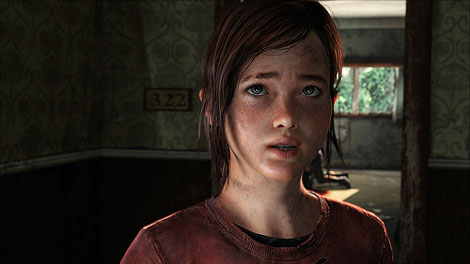
And thus came the idea for the Virtual Lighting Studio.
What is it for, then?
The Virtual Lighting Studio (VLS) is here to entertain and to teach lighting, whether you are a photographer or CG artists. This is what was originally envisioned. Other side uses would be shot planning or as a lighting scratch pad to try out stuff quickly. There are a number of applications on the Web or on tablets to setup a lighting diagram but without the possibility of seeing the result on a model. That felt like a shame. With these uses in mind the application should be simple, fun, interactive and with a high degree of fidelity.
As a user and software developer (oops, I blew it), it has always been hard to find applications that where bug free, useful, feature packed and quickly built (also known as “inexpensive”)… all at the same time. You have to make concessions at one point, or you’re a genius. I decided to compromise and choose to pick bug free, useful and quickly built as my main objectives, in a “do less but make it good” manner. Time will tell if this has been achieved.
As it turns out, a number of users have contacted me to ask permission to use the VLS in training courses. This in itself is truly rewarding. You could argue that the VLS is extremely photography oriented and you would be right. But CG lighting and rendering, for instance, is becoming more and more influenced by photography, once again because of the huge lighting culture in this field. Once again, the initial train of thought that led to its conception was to give CG lighting artists the same technical vocabulary as photographers.
What can you put in a virtual studio?
There are probably as many lighting techniques as there are subjects to light. Skills can be different whether you are lighting macro shots of food or gleaming sports cars. I choose something that most of us get to encounter on a day to day basis, humans! It’s one of the most interesting subjects to light and also probably the first thing you shoot when you start photographing. So the Virtual Lighting Studio, in its first incarnation, is solely dedicated to simulating the lighting of a human headshot, with a fixed framing.
Yes that means you don’t get to move the camera. But you do get to choose between two models, bald and with hair, both of them creepy as I understand from the initial reactions. Hopefully, new models will be available in the near future to try to have a nearly full spectrum of lighting conditions, especially when it comes to skin color and gender.
By the way, a number of people have asked me if it is possible to change the model easily with one of their own. Alas, this is extremely difficult to do for the moment. You’ll have to hold Lee Perrry-Smith’s stare a bit longer.
Remember, it’s all about light
You get to play around with six lights with an extra “ambient” lighting parameter that simulates the ambient lighting bouncing off your studio. Each one of these six lights can be individually moved around the model in discreet jumps. This is the second strong limitation of the application along with the fixed framing. Your lights cannot be placed anywhere.
But you have approximately 22.5° of precision of placement in front of the subject and 30° behind which hopefully enables you to easily get to standard lighting setups such as Rembrandt or loop lighting. The lights can also be moved above or under the subject and nearer or farther (in three steps for the latter). This gives 297 possible light positions which, how frustrating it may seem, does give room for experimentation.
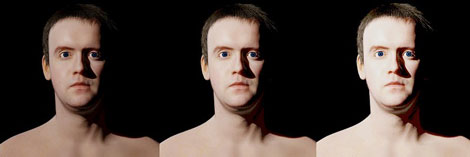
You can also control the intensity of each light in half stop increments in a pseudo-TTL lighting way. Each light starts at 0 EV intensity, which yields a correct exposure. You can then manually correct for each light. This really simplifies the problem and hides a number of technical aspects pertaining to guide number, power, distance, etc. The user can concentrate solely on the final aesthetic result. But be on the lookout for future updates of the application. A “manual” lighting mode would most certainly be extremely educational.
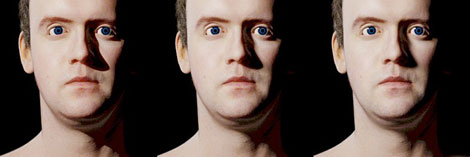
Finally, you get to choose from a number of light modifiers to shape your lighting. At this time these include a snoot, a ring light and two softboxes (40x50cm and 60x90cm). The list is limited and a number of feedbacks have pointed out the obvious lack of grids or reflectors. Once again, be on the lookout.
Great care has been taken to have the lights react in the most plausible and realistic way. If this is successful you should be able to transfer your experience from the VLS to the field directly. One of the key impressions I wanted to convey, for instance, is the correct visual impression of stopping down a light half a value or a full value. This is key for establishing a common technical language between all those lighting areas mentionned in the introduction.
All these setups can be saved and restored during your sessions so you can compare different solutions. Each one of these setups can also be saved as an image file with the lighting diagram and the resulting portrait shot.
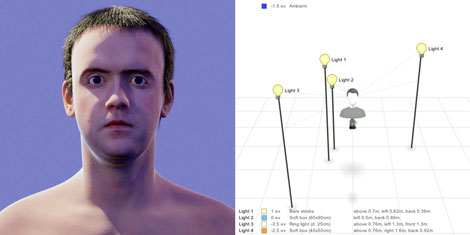
OK, so how virtual is this virtual lighting studio?
It’s virtual: you don’t have to lug material all over the place, except your PC, Mac or tablet. Which means you get to try out things without needing an assistant, expensive gear or time. You just need an Internet connected device with an HTML5 supported browser. At the time of the article that includes the latest versions of Google Chrome, Mozilla Firefox, Apple Safari and the dreaded Internet Explorer.
According to feedbacks, a number of people would appreciate to use the application without internet connection. This of course would be great when using the application on the field. Pascal Montjovent, a director of photography who has reviewed the VLS, has been using physical dummy models when setting up his lighting on movie sets. This would certainly be an interesting evolution for the VLS.
And now what?
The VLS is a work in progress. There are a number of nice features to add. But in its current state and format I feel it must stay simple. Once again, it serves mainly an educational purpose but a number of other uses are being imagined. It has grown organically up to this point, trying to take as much input from the user community and a lot of upcomming stuff is in the pipes. So if you feel like giving your feedback on the Zvork blog www.zvork.fr/blog, you’re welcome, whether it be to suggest features or report bugs.
I am also on the lookout for people using the VLS in unexpected ways or for unexpected fields. So if you’re one of those, get in touch.
Needles to say, go ahead and light!


